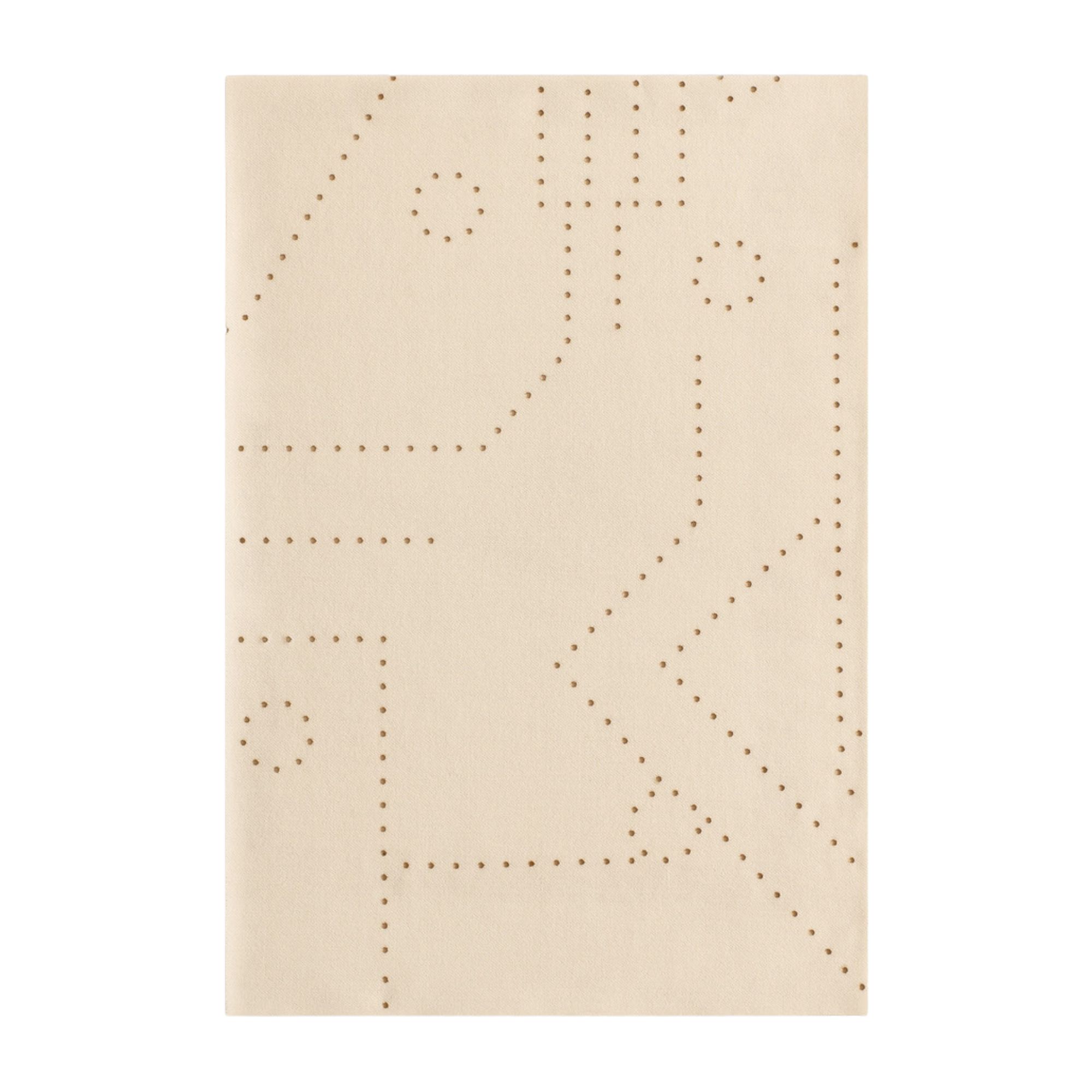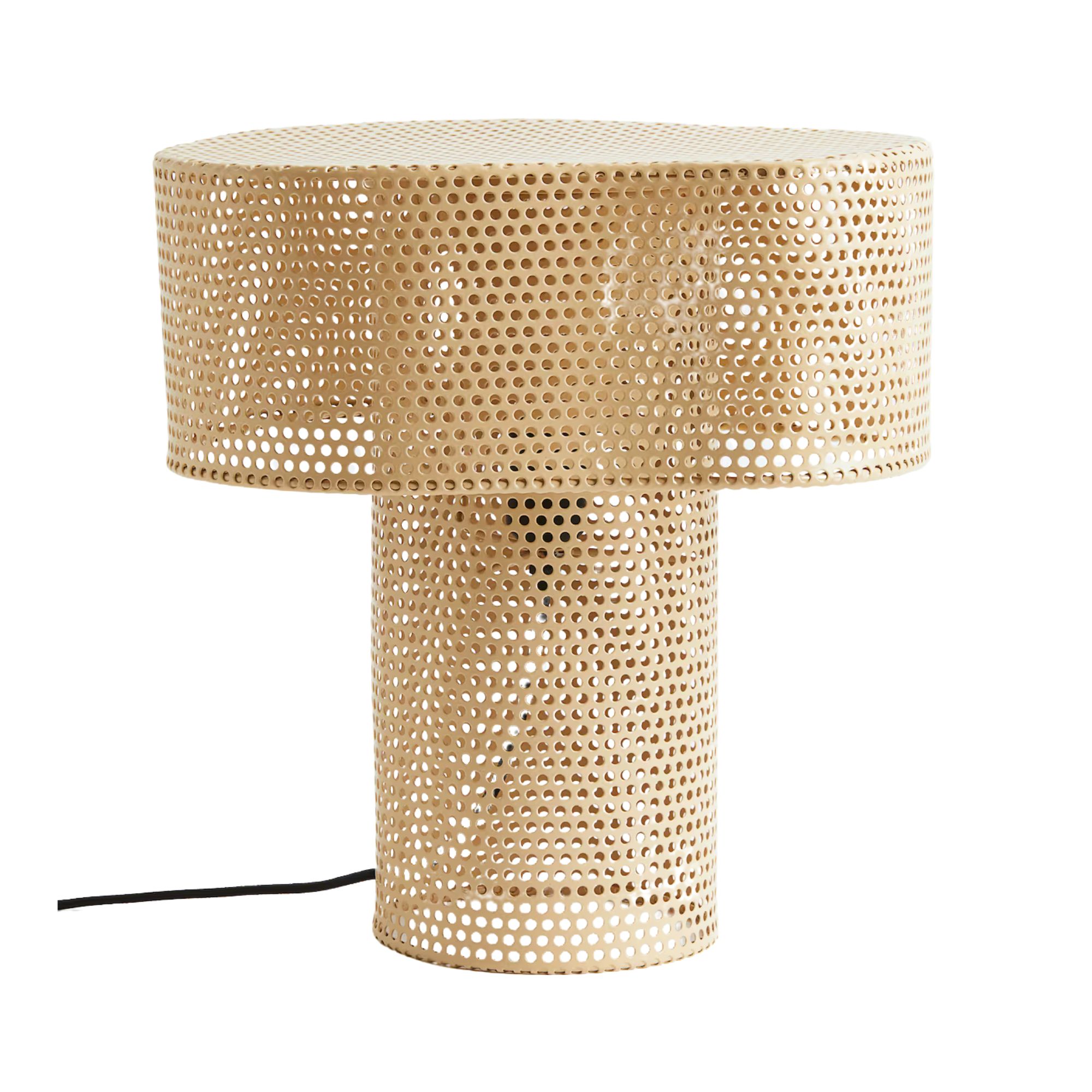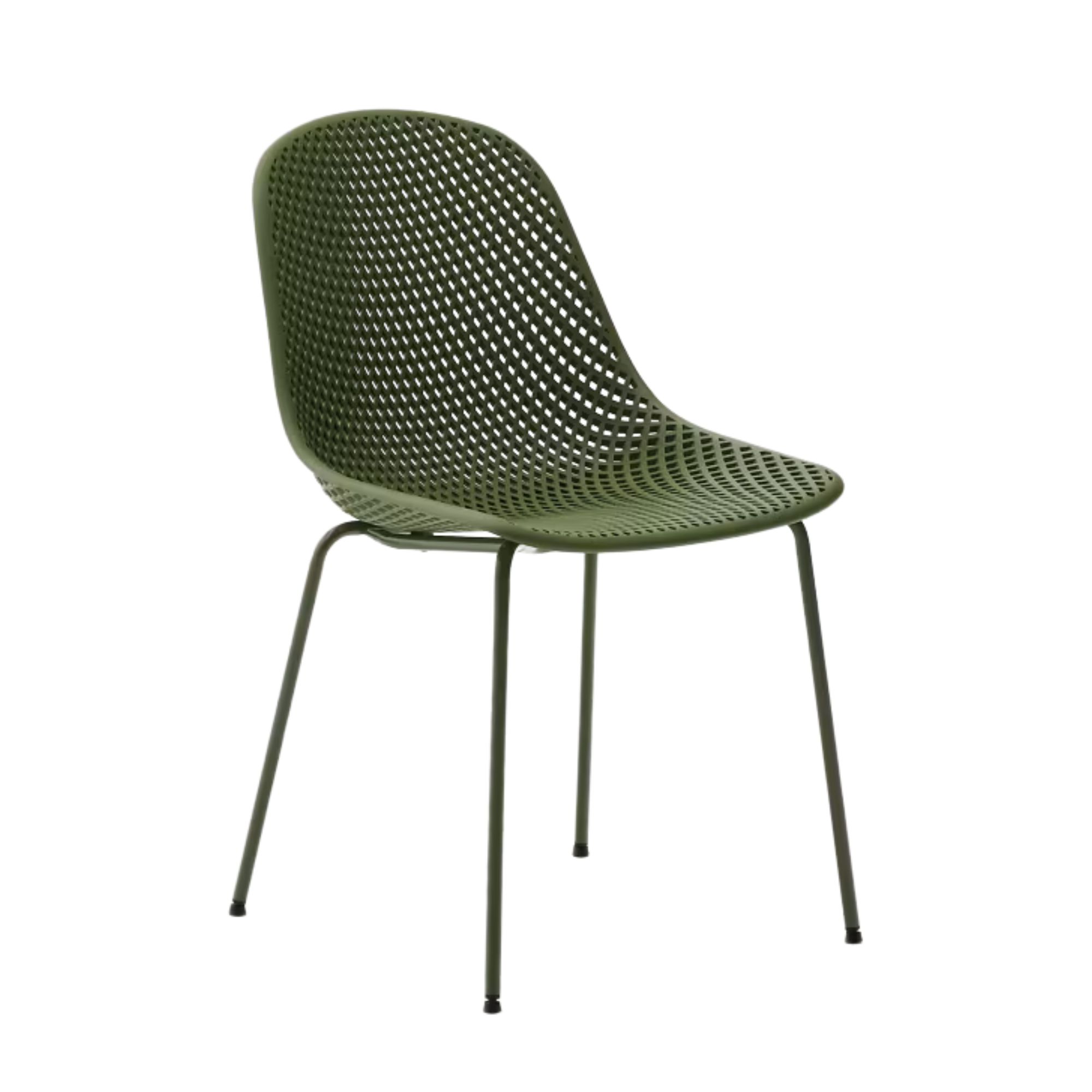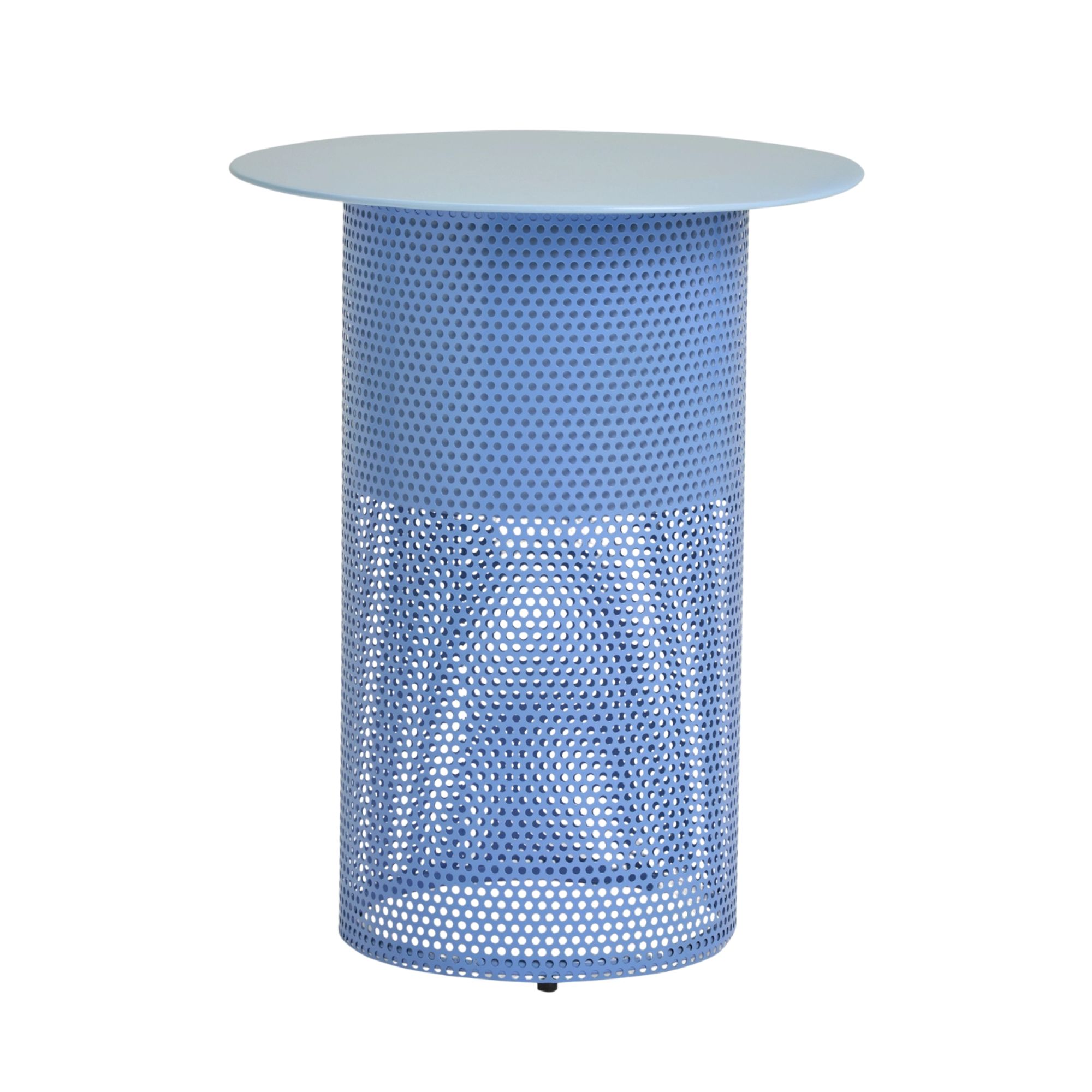Peek-a-Boo Panels and Punched-Out Finishes — Why Perforated Surfaces Are the Coolest Thing in Interiors Right Now
Airy, edgy, and slightly see-through, I'm seeing perforation everywhere I look, and it's giving way more than just 'industrial-chic'

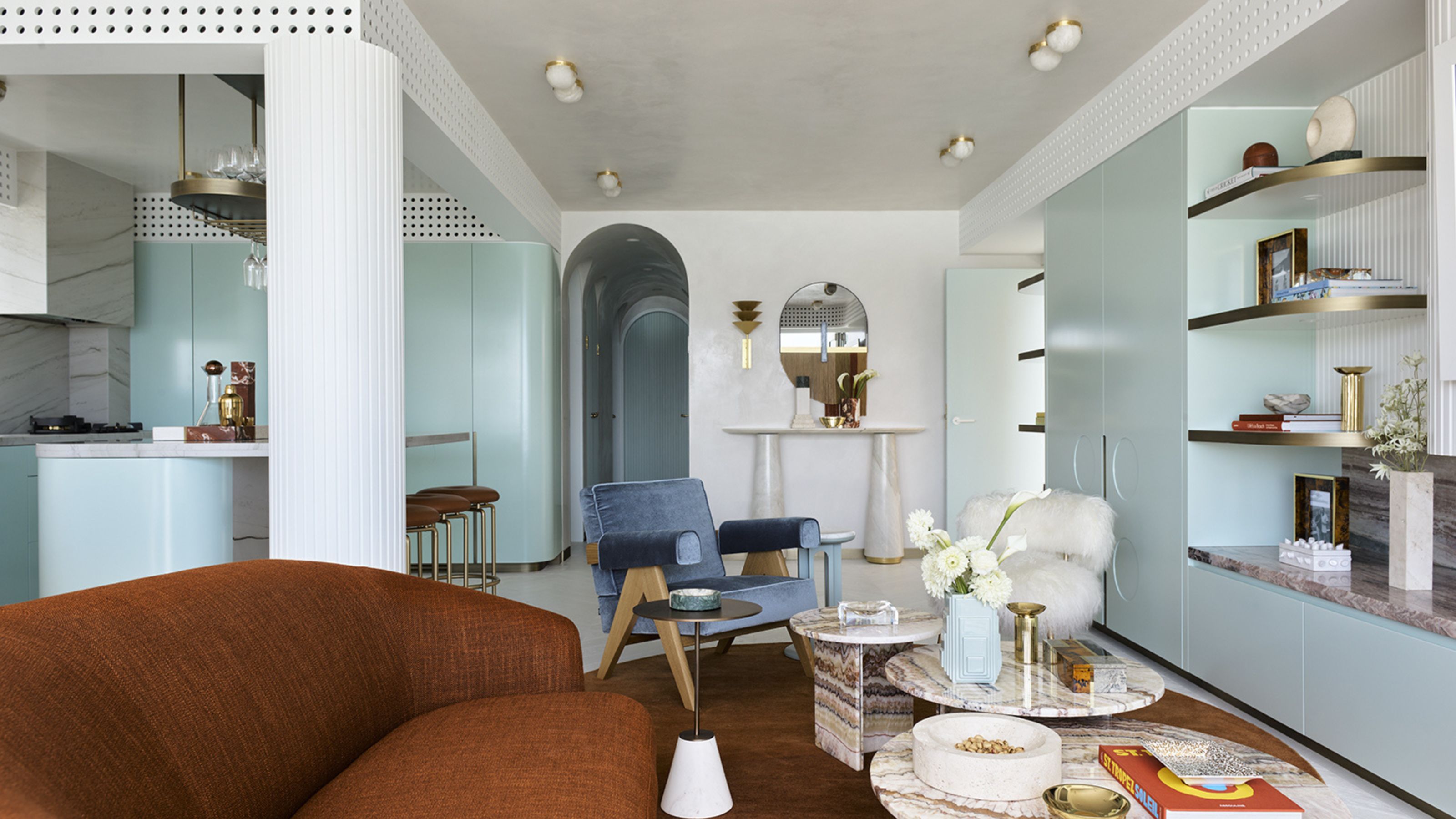
You know when you learn a new word for the first time, and then you start hearing it everywhere? I have that, but with design. I'll notice a new detail, a finish, or color, and all of a sudden — it's everywhere I look. And my latest hyper-fixation? Holes.
Purposeful holes, mind you. Punched-out, perforated pinpoints that play with light, texture, and the overall flow of the space. I've seen them in fabrics, in doors, and even architecturally punctuating solid walls.
And while I've been slowly saving images of this soon-to-be interior design trend (you heard it here, first), I decided it was finally time to call it when I saw a pretty perforated detail on a drape in Dedar's Library at this year's WOW!house showcase. So, what is it, where is it best done in the home, and why is perforation the new shortcut to picture-perfect interiors? All that and more, below.
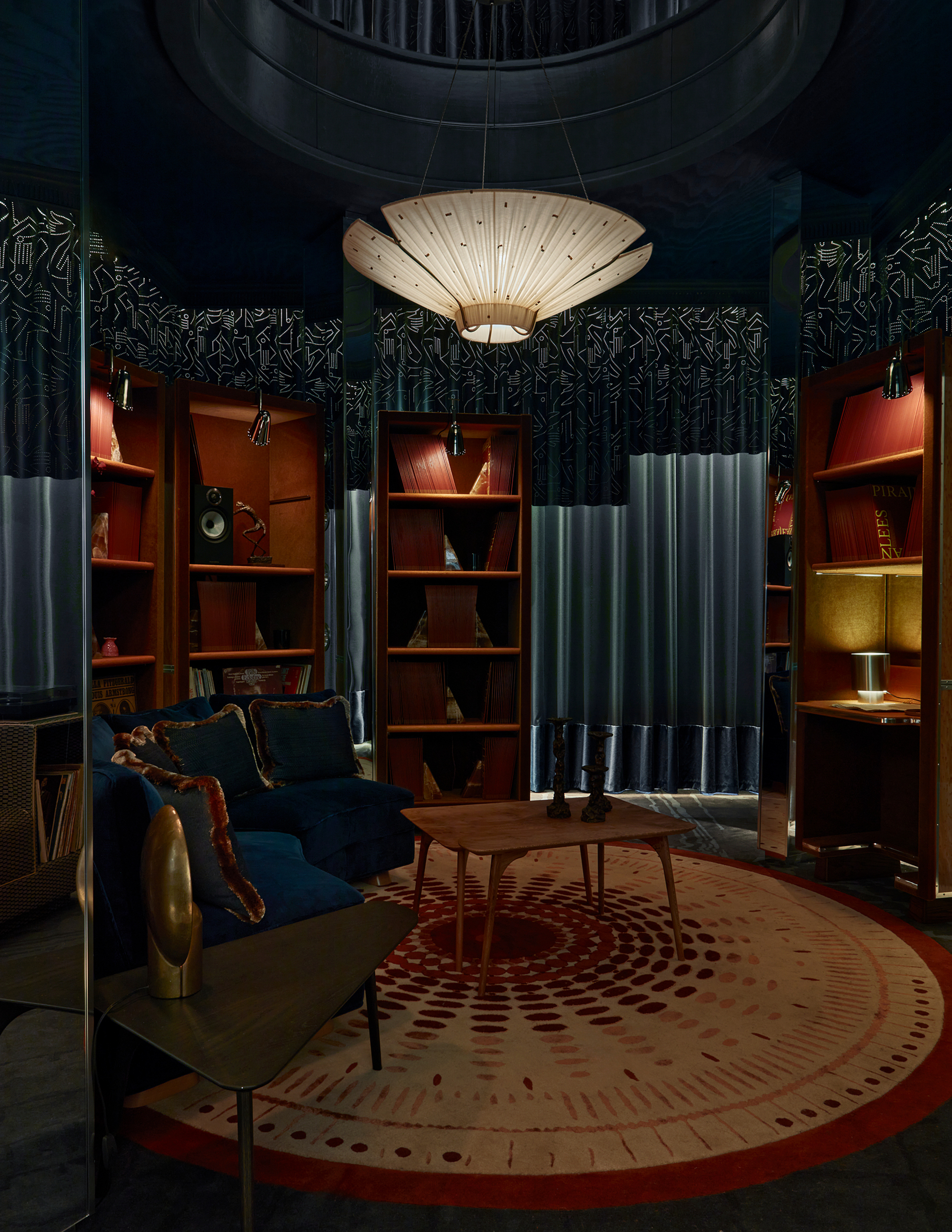
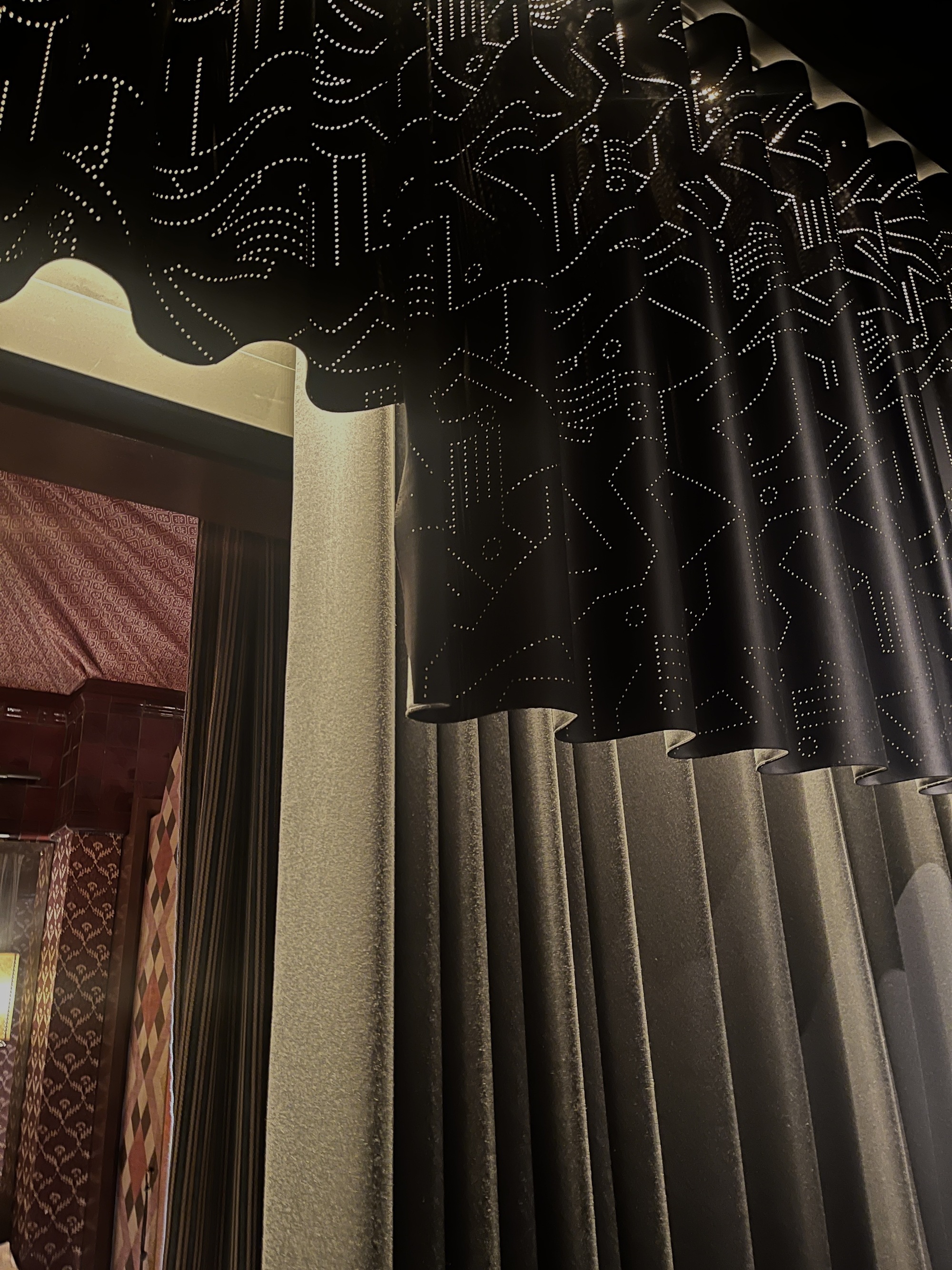
In case you've missed it, polka dots are trending right now, both in our wardrobes and our homes. And while I'm not completely on board with that — yet — I feel like perforated surfaces offer a similar effect, with the same sense of movement and playfulness, while also feeling slightly more design-forward, elevated, even architectural.
As mentioned, design studio Pirajean Lees incorporated a draped, perforated fabric in their room at WOW!house this year. Shown above, you can see how it adds movement to the space, the light spilling through the pin-pricks sparkles, as if stars in a night sky.
"Made from 100% virgin wool, the textile features a laser-cut, jazz-inspired pattern that evokes abstract musical notes and musicians’ hands, aligning perfectly with our narrative for the room," Clémence Pirajean, co-founder of the studio, tells me. "Crafted by the renowned upholstery house Maison Phelippeau, the curtains are backlit to bring the motif to life, creating a soft focal point that frames the Library. The layered textile also helps control the sound, enhancing the acoustics and reinforcing the calm, inviting atmosphere we wanted to achieve."
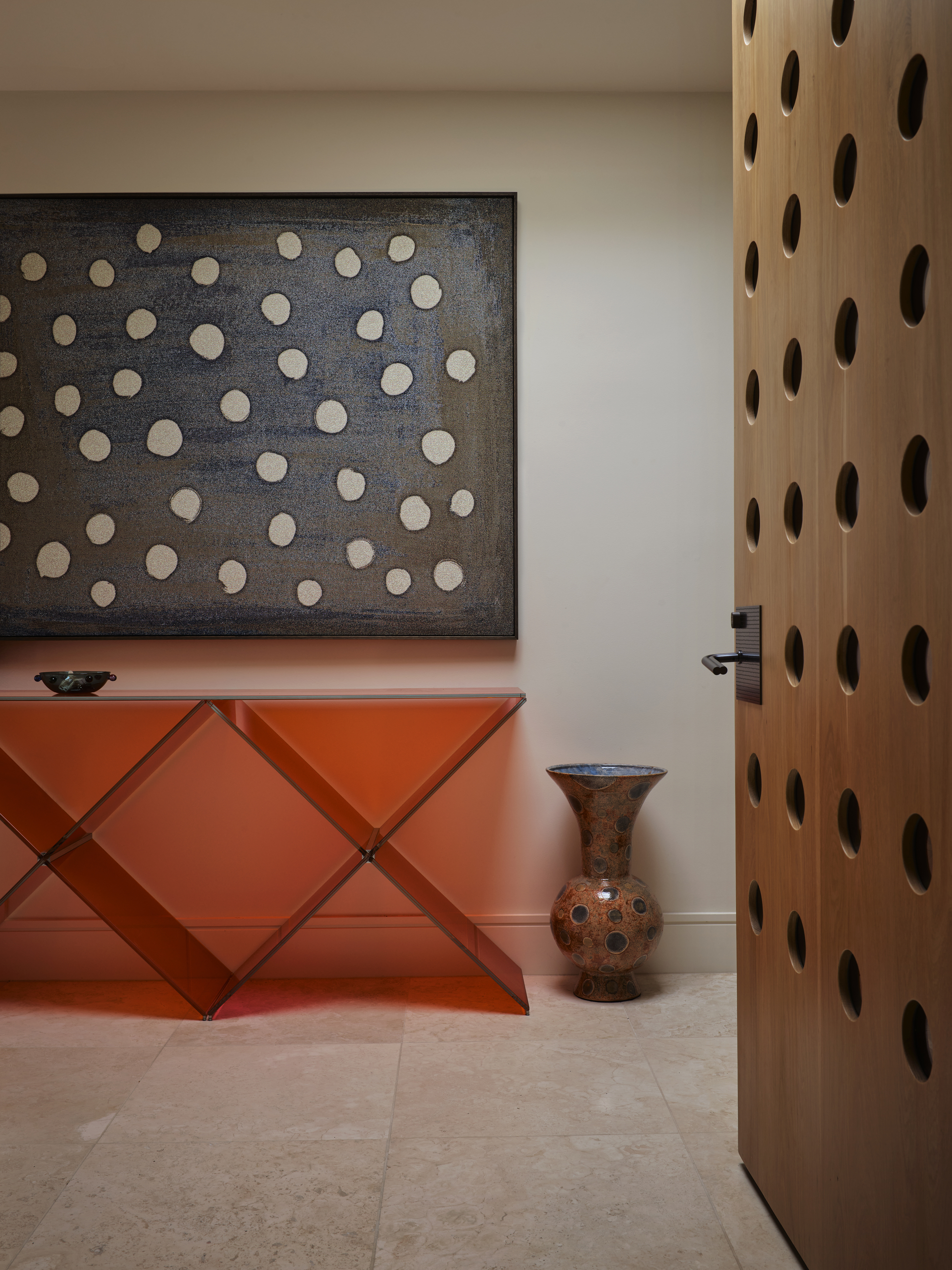
But if decorative drapery is off the cards for you, there are more architectural ways to incorporate perforated surfaces around your home, too. Take the custom-made door leading into the home above, which features perforations backed with bronze mirrors.
The Livingetc newsletters are your inside source for what’s shaping interiors now - and what’s next. Discover trend forecasts, smart style ideas, and curated shopping inspiration that brings design to life. Subscribe today and stay ahead of the curve.
"A gentle shimmer reflects from its surface when sunlight hits it, which is like a warm welcome for house guests," explains its designer, Yasmine Ghoniem, founder and principal at Sydney-based YSG Studio.
"The home features some circular windows on its lower floor, like those you find on the hulls of boats," she adds, "so this was a way of incorporating some original architectural elements, too."
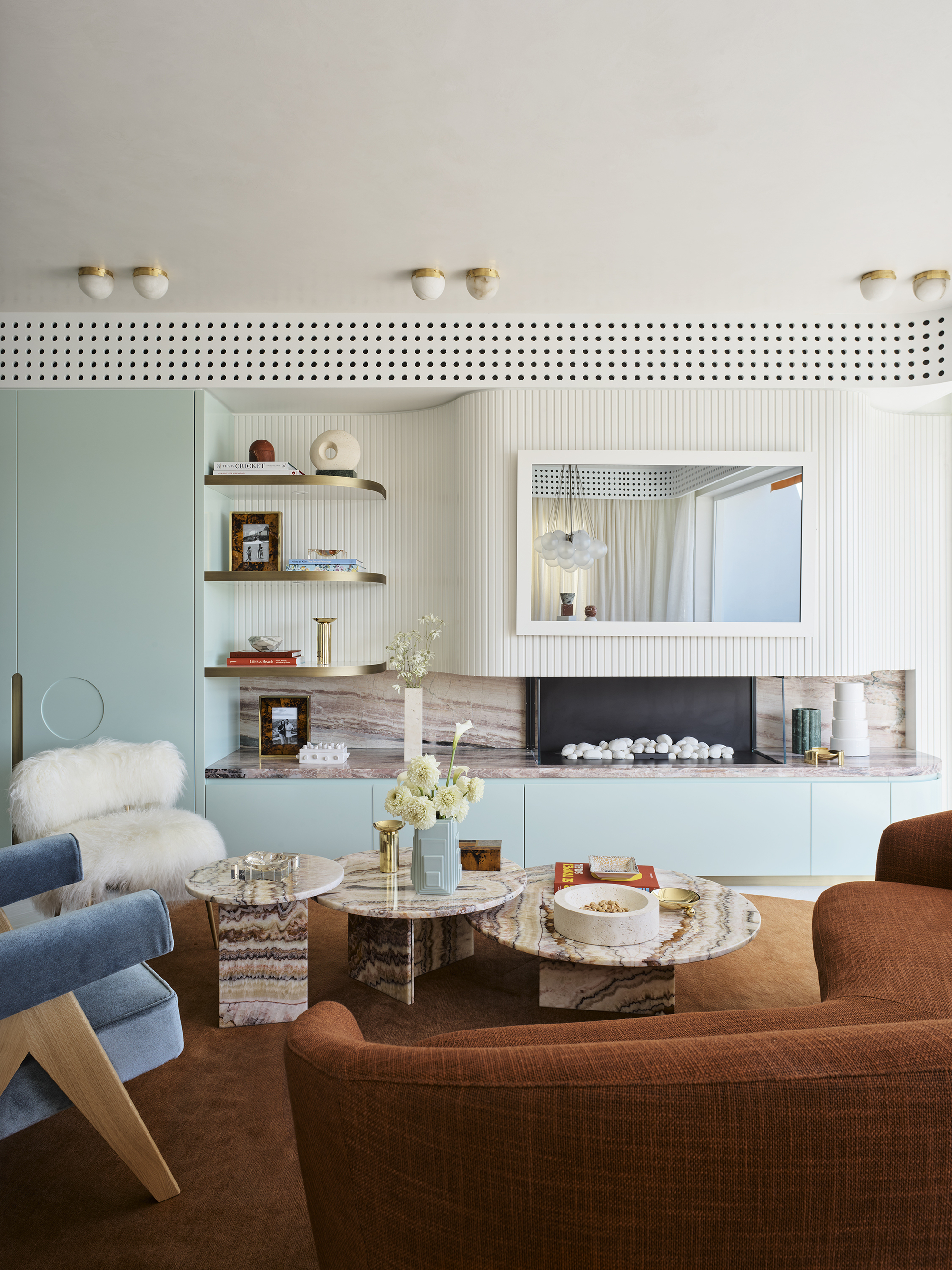
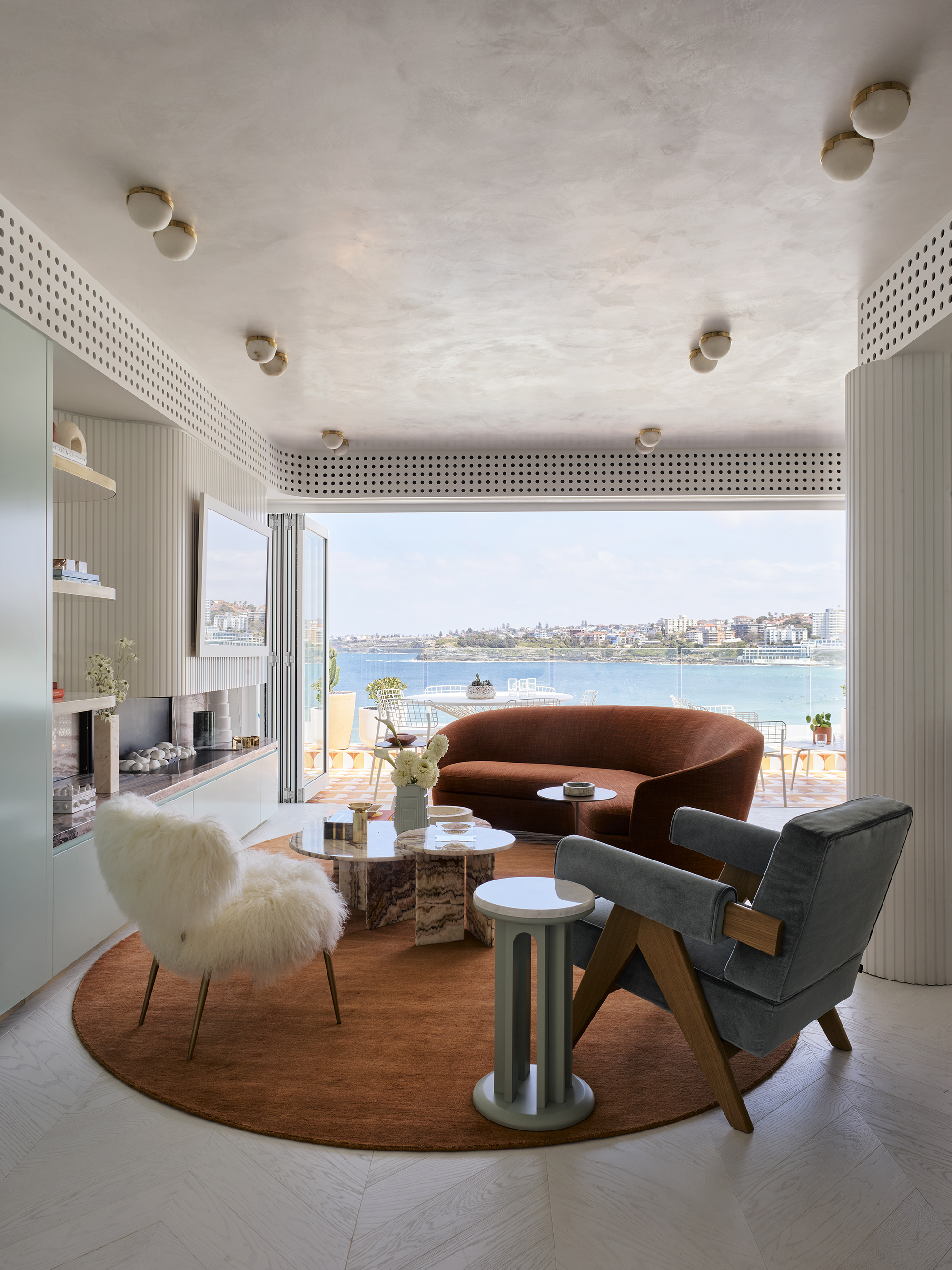
And perforated surfaces can serve more practical purposes, too. In the living space above, interior designer Greg Natale discreetly disguised an air conditioning unit behind a perforated surface. It feels intentional, architectural, and certainly not what you'd expect from the purely functional feature.
"Rather than relying on standard vents, we often design custom features that conceal these systems within the interior architecture," he explains. "In this case, the holes in the perforated detail allow for airflow from the AC unit, enhancing the space with a distinctive design detail that ties into the broader aesthetic."
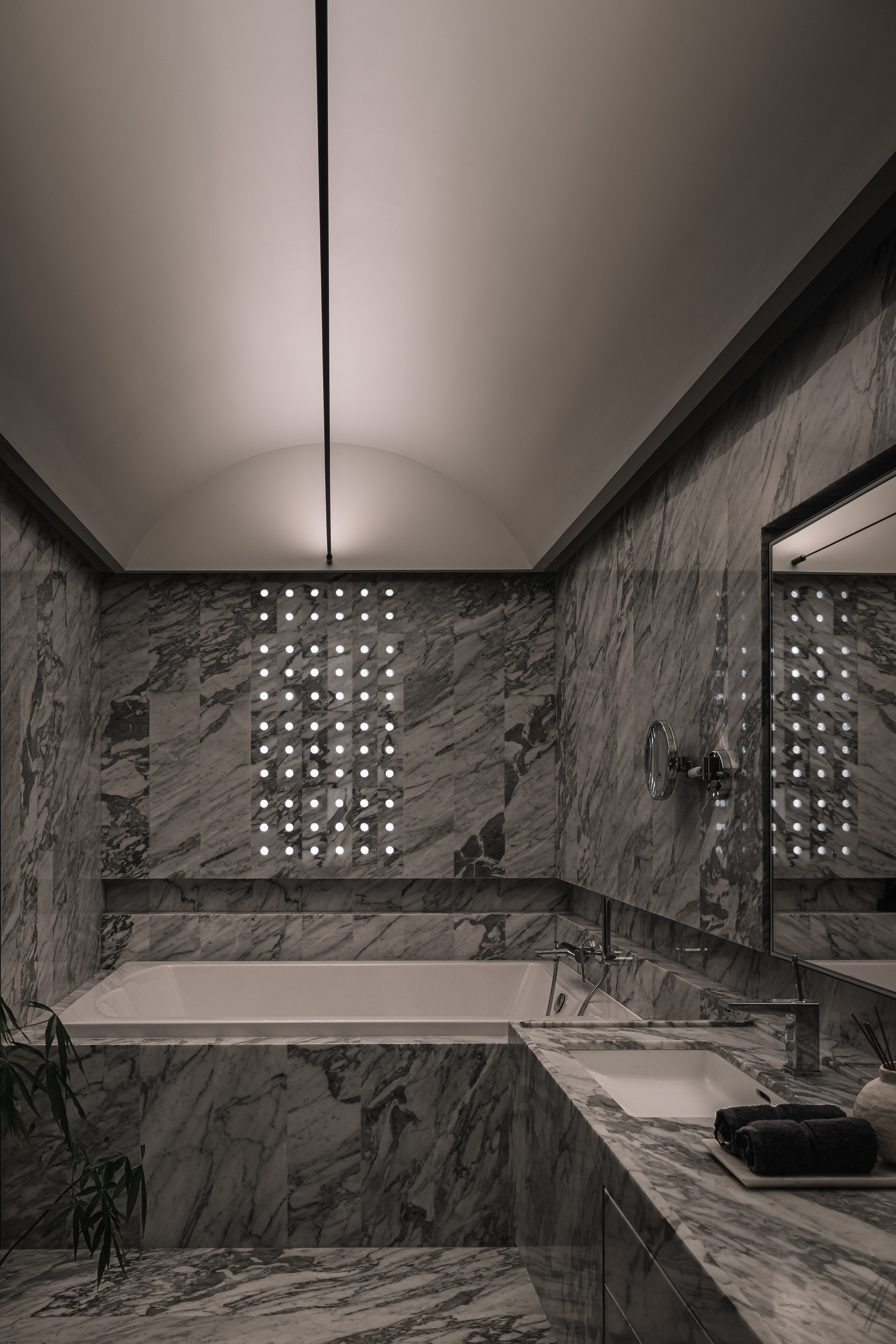
While perforations can help increase the flow of light and air through traditionally solid surfaces, they can also, cleverly, do the opposite.
In this modern bathroom design by Mumbai-based firm, DIG Architects, "a grid of circular punctures lets the natural light in rather than having a mundane window opening," says Amit Khanolkar, one of the studio's principals.
While it feels super architectural in the space — which features walls and floors in Italian Venatino marble, and a single-vaulted ceiling illuminated by a Davide Groppi 'rope' light — the perforated tiles "amplify and refract the amount of light coming in," while also ensuring ample privacy in the space, says Amit.
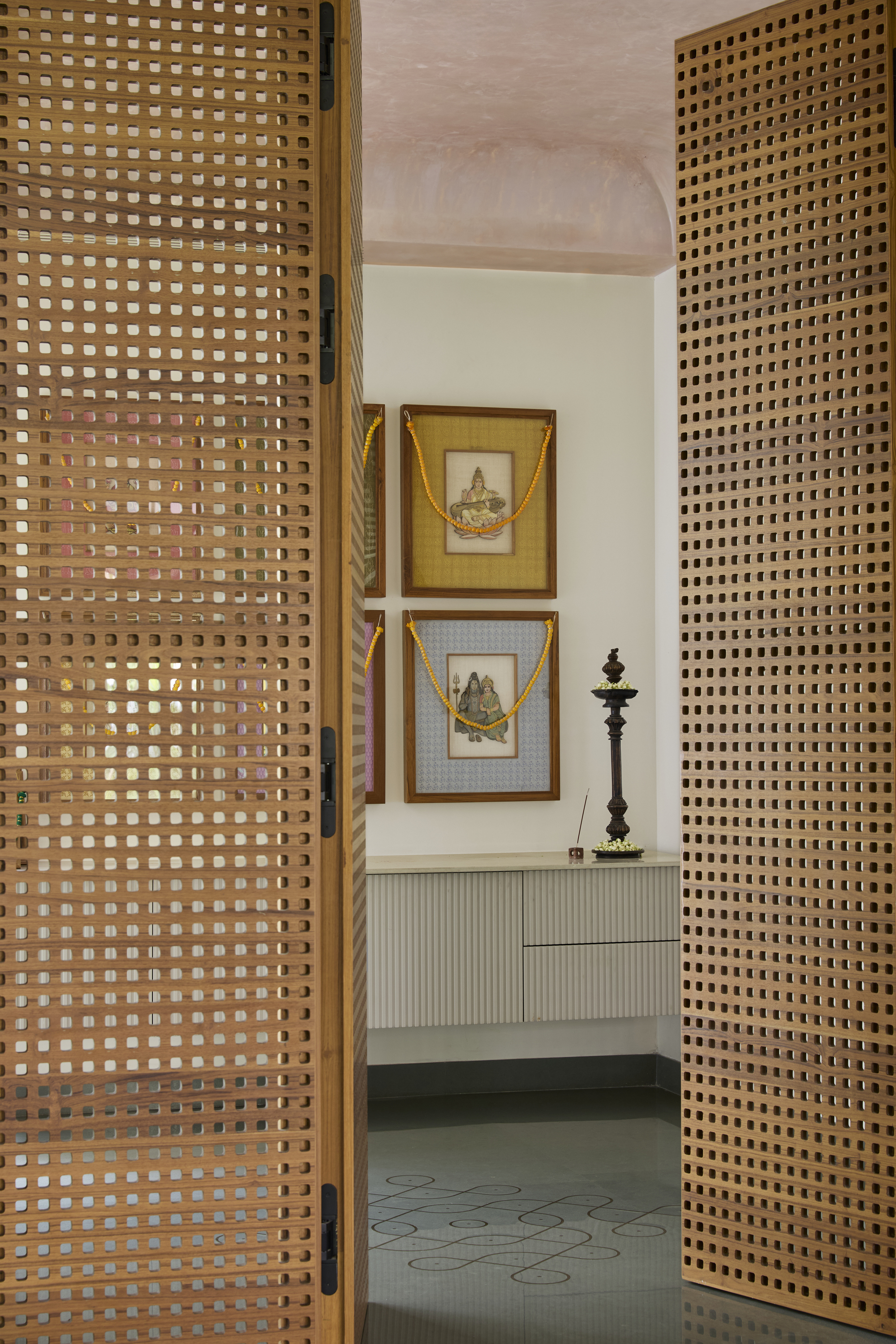
Now, as much as I wish I were unearthing a completely new and unprecedented trend, the truth is that perforated surfaces are by no means a new thing. It's a design element that's existed for eons, but I do feel like designers are starting to play with punctures in new and different ways right now. But why?
My first guess is to do with the resurgence in 70s and 80s design language we're experiencing right now. When I posed that suggestion to Greg, he said: "Absolutely — I think the renewed interest in perforation ties back to that revival, particularly in postmodernism. In the 80s, geometry became a playful tool for decorating spaces, and perforated surfaces tap into that spirit. They’re graphic, rhythmic, and a bit unexpected. There’s also a contemporary appeal in how they balance function and ornament. For example, they can conceal ventilation, filter light, or divide space, all while adding a sculptural quality. It’s that mix of utility and visual intrigue that’s making them so popular again."
So, whether you're using perforated surfaces to block sightlines or to boost them, the design element seems to nod to a certain dialogue that feels considered, clever, and undeniably cool. And far from the 'industrial chic' connotations I'd previously associated the meshed material with.
Architecturally isn't the only way to embrace the look, either. Below, I've found three pieces of decor that make the perforated trend look extra pretty.
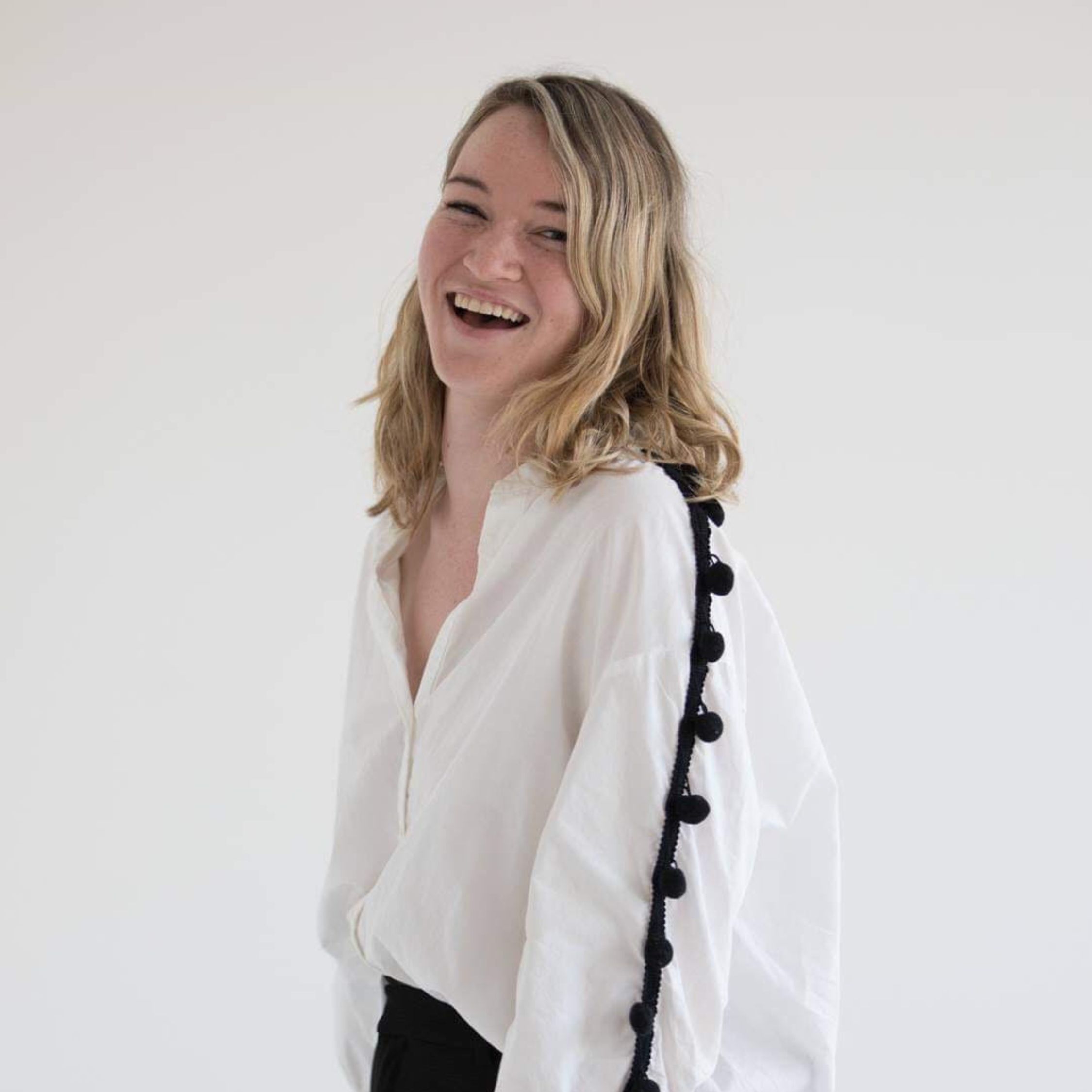
Emma is the Interiors Editor at Livingetc. She formerly worked on Homes To Love, one of Australia's leading interiors websites, where she wrote for some of the country's top publications including Australian House & Garden and Belle magazine. Before that she was the Content Producer for luxury linen brand, CULTIVER, where she nurtured a true appreciation for filling your home with high-quality and beautiful things. At Livingetc, she spends her days digging into the big design questions — from styling ideas to color palettes, interior trends and home tours. Outside of work hours, Emma can often be found elbow-deep at an antique store, moving her sofa for the 70th time or mentally renovating every room she walks into. Having just moved to London, she's currently starting from scratch when it comes to styling her home, which, while to many may sound daunting, to her, is just an excuse to switch up her style.
